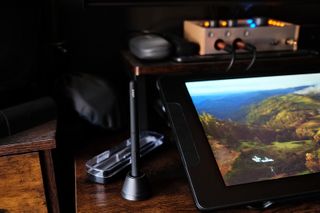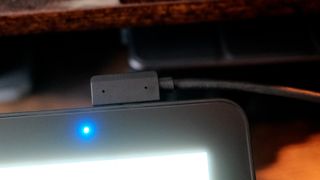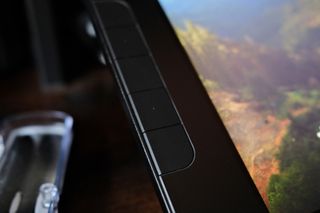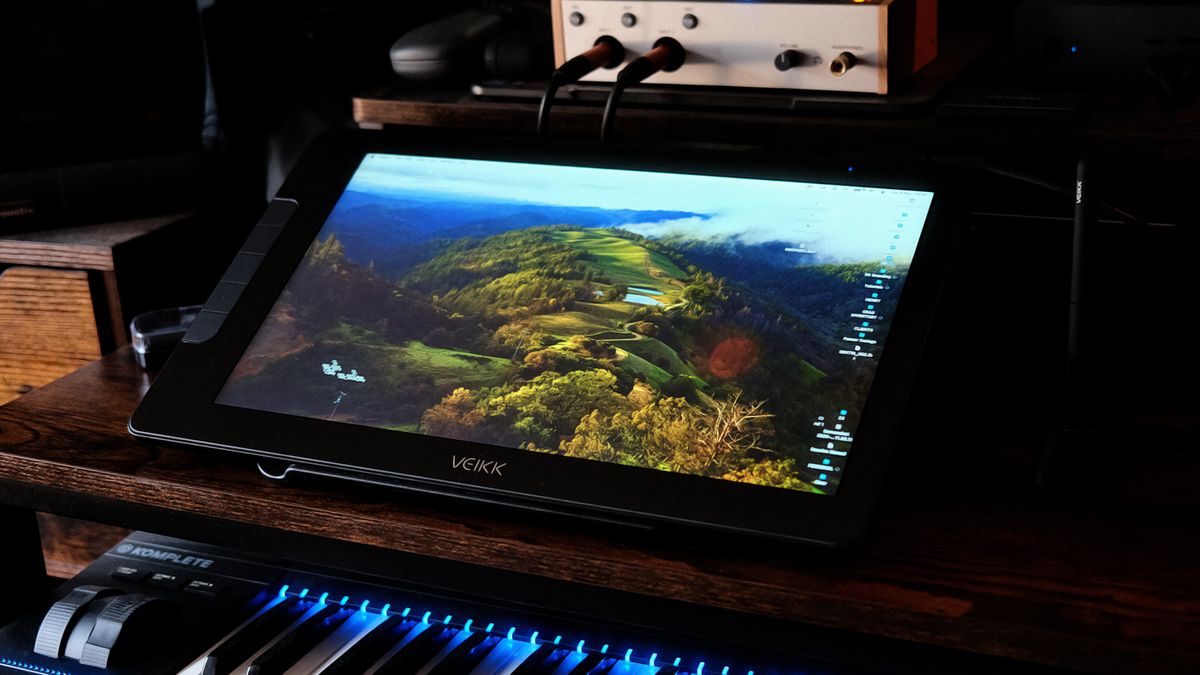Pen displays used to be prohibitively expensive pieces of gear (some still are) that you would only find in the studios or pro artists and designers but these days the technology has advanced and the average price has come down. That is in part due to a more competitive market, with companies like XP Pen and Huion taking on the big boys like Wacom. Some smaller companies are in on the action too and Veikk is one such developer, aiming at taking its bite of that big digital pie.
For a look at some of the best options you can always check our guide to the best drawing tablets. I’ve used just about all the pen displays from all the manufacturers out there, at various levels of cost and feature set and I’ve been surprised by what can be found on the more budget friendly options. Veikk’s VK1200 was the first of theirs I had used a little while back and while functioned fine it was a little underwhelming, so my expectations weren’t that high when the Studio 16 was delivered. How wrong I was!
Veikk Studio 16: What’s in the box?
The packaging (which is recycled, well done Veikk) houses the pen display and stand, a case with two pens, a pen stand, a bag of spare nibs and all the required cables. I’ve noticed a growing trend recently where the spare nibs and removal tools are often shipped in a disposable bah and I’m really not a fan of this. Firstly it’s more packaging to throw but secondly, it really isn’t a good storage solution. Considering there’s both a stan and case for the pens, it can’t be that hard to make them so they can house the spares. At least they could be put in the case, although they’d rattle around loosely.

Setup and build quality
First things first, I am very impressed with how Veikk has managed to build something that feels this premium for under £300. The Studio 16 feels really good in the hand. It’s solid and robust, without being chunky. The only cheap plastic is the stand but it does a good job, with three preset angles ready to use and it folds flat and thin, so it’s easy to travel with, which makes a lot of sense for anybody heading out with a laptop.
There are a number of buttons dotted around the Studio 16. On the right are the power and brightness buttons, on the left a set of five customisable function buttons and at the top left is a customisable wheel. This wheel is metal and clicks nicely as you turn it. It feels very premium and is designed to follow the contours of the display, while remaining easy to access and turn.
All the buttons feel great, with a responsive engagement you often lack on cheaper gadgets.
The rear has four rubber feet, so it won’t slip around on a desk, but in all likelihood it will be used on the stand most of the time, which has similar rubber to hold both it and the pen display in place.
I’ve already talked about the spares situation but at least the Veikk ships with a case. It’s not the nicest looking or feeling but it does a good job, with a magnetised lid and dedicated slots for the two pens. Why two? Well, there’s a thicker one at 13.7mm and a slim one at 10mm. The difference may not seem much but in use it is a great deal and could turn an uncomfortable extended drawing session into a more comfortable one.
Along with the case there’s also a nice pen stand which holds one pen for easy access. I love this touch and while nothing new, it’s good to see on a cheaper device.

A quick download of the drivers from the Veikk site and I was really dreading some of the hoops I might have to jump. Previous experience has shown me this can be far more faff than is needed but not this time. It didn’t even have a hiccup when switching to and from my Wacom Cintiq.
I like how Veikk has designed and supplied everything needed for various computers. You get a split cable which allows you to connect via HDMI and USB, or a single USB-C cable can be used but here’s a snag. The cable isn’t very long, so you’ll need to either find another or use an extension, which isn’t such a big deal, except the recess for the USB-C port on the pen display is too small for most cable’s end casings. You’ll need to extend the other end, which should be fine and does keep things neat as the Veikk supplied cable has a right angled end.
The Studio is compatible with quite the range of devices too, from MacOS and Windows, the ChromeOS, Linux and Android, although no IOS at this time.

Performance
The Veikk Studio 16 really surprised me in terms of build quality and performance. In use it did a great job for drawing, painting and 3D modelling, as well as simple day to day computing. I don’t like using a mouse, so I almost always use a tablet of some form, usually a pen display, as I find it less of a strain.
The Studio 16 may only have a 1920 x 1080 screen but it has good contrast at 1000:1 and is plenty bright enough for even a very well lit room. It’s laminated screen with some extra coatings for anti glare and anti finger print, both of which work well. The glass has a slight texture to it which I am a big fan of. Some manufacturers don’t quite get this right and can be too slippery or excessively scratchy. Here, the nib and texture surface is spot on, giving a pleasing amount of paperlike feel. While this is going to be personal preference to some degree it’s good to know what kind of experience you are in for.
The pens are again, not the most premium but certainly don’t feel cheap. The low profile buttons feel good and the casing has a satin feel to it, which I appreciate more than some of the silicone covers you see elsewhere. They may be a bit more grippy but they also need cleaning more often and do eventually break down.
These pens are pretty accurate too. Don’t be fooled into thinking an HD display means less accuracy for input. You get over sixteen thousand levels of pressure sensitivity here, more than you will every be able to notice. Resolution is also plenty high enough although Veikk doesn’t report the figure. I never felt a need for more.
The drawing experience is very good. The combination of texture, pen accuracy and complete lack of lag provides a natural feeling interaction and there’s only the tiniest amount of parallax between nib and display. The only real gripe I have here is the retraction distance. It’s acceptable at .6mm but can feel very slightly loose but again that might just be me. It’s by no means a bad thing.
All the buttons on the pens and the pen display can be customised, so I spent some time tweaking the options to my preference. I wasn’t sure if I’d use the wheel much but soon came to rely on it quite a lot. It can serve a number of different functions from zooms and brush size. Veikk really pushes this on their site, possibly too much, but it’s hard to ignore, as it really is a nice way of interacting with software.

Should I buy it?
Some might assume that colour accuracy is lower on the agenda of artists purchasing something at this price range but that doesn’t need to be an issue. With well over 100% SRGB here, colours are rich, accurate and vibrant. Often anti-glare coatings can make things milky and reduce contrast but not here.
The whole experience working with the Veikk is undeniably pleasant. Yes, I’d like a 4k display and an extra button on the pen but then the cost would rise significantly. Will it replace my daily drive? Probably not, but it is a quarter of the price and I’d be happy using it daily and especially for taking on location or traveling, where the weight and form factor make it a breeze to pack and that single cable connection is fantastic.
I don’t know how Veikk has made such a good product at this price but it bodes well for artists and designers, when up until very recently the investment was so much higher. The time has come when every artist can genuinely find an affordable option for what has been an aspirational purchase for so many.
